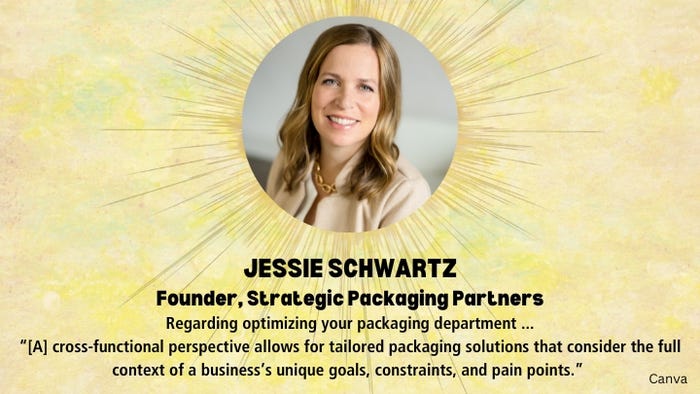How to Optimize Your Packaging Department
Want your operation to be more effective? Focus on these areas to fully leverage your expertise and ensure success on cross-functional projects.

Packaging is multifaceted and can significantly bolster or hinder a business. Nearly every aspect of a company interacts with packaging decisions, from manufacturing and logistics to sustainability, marketing, and finance. This complex relationship matrix makes it challenging to pinpoint which areas of packaging to prioritize when aiming to avoid costly missteps and optimize leverage. The key is taking a cross-functional approach that uses expertise across departments to empower strategic packaging choices.
Collaboration across business units is imperative to develop packaging that aligns with overarching business objectives. By bringing together stakeholders from diverse functions, companies can evaluate packaging holistically and systematically. This enables identifying potential pain points, as well as opportunities to leverage packaging to drive growth and efficiency.
For example, supply chain leaders can provide input on optimizing packaging for warehousing and distribution needs. Manufacturing can recommend materials and formats to enhance production processes. Sustainability managers can advise on how to minimize packaging waste and materials. Marketing and sales can offer insights on packaging aesthetics, branding, consumer preferences, and unmet needs. Quality control can suggest materials and specifications to maintain product integrity across the supply chain.

This cross-functional perspective allows for tailored packaging solutions that consider the full context of a business’s unique goals, constraints, and pain points. It empowers making strategic improvements to packaging that target the most impactful areas for reducing costs, protecting products, boosting sustainability, and strengthening brand identity.
Beyond internal collaboration, external packaging partners can also provide an objective, “outside” perspective. External experts may identify innovative formats, materials, technologies or approaches a company had not considered. They can also conduct testing and analysis on packaging performance that internal teams lack bandwidth for. The most effective partnerships entail close collaboration between external consultants and internal cross-functional teams.
Focus your efforts to optimize your packaging department.
Some key areas where cross-functional insights can optimize packaging include:
1. Material evaluation and selection based on performance, sustainability, branding, cost, and manufacturing needs;
2. Structural design balanced across product protection, end-user experience, shelf appeal and ease of production;
3. Supply chain optimization by aligning packaging with warehousing, shipping, and retail needs;
4. Sustainable packaging formats to reduce waste and materials;
5. Ecommerce-ready packaging tailored for direct-to-consumer delivery;
6. Cost analysis to right-size packaging spend to business requirements;
7. Branding elements and packaging formats to reinforce messaging and positioning.
In the end, packaging should not happen in a silo but through cross-pollination of expertise across departments. This collective knowledge empowers businesses to align packaging with overarching priorities around costs, sustainability, brand experience, and more.
With a collaborative approach, encompassing internal and external perspectives, companies can implement strategic packaging decisions that leverage every facet of their business.
Use these free tools to better optimize your packaging department.
In the spirit of embracing discovery and continuous improvement, here’s a self-assessment survey. This quiz focuses on evaluating your organization’s packaging practices — with emphasis on operations, quality, and logistics. You might be curious about how packaging impacts the bottom line, but unsure where to start investigating that. This assessment will provide business insights for you to discuss with your team.
Take this Basic Assessment Poll and get immediate feedback/tips regarding (1) Damage Claims, (2) Product Quality Issues, and (3) Packaging Quality Issues. These are three of 10 areas where we look.
Now that you know where to focus your efforts, here are suggestions of how to optimize by looking at:
1. Packaging specifications.
2. Pallet specifications.
3. Shelf life.
4. Structure choices.
5. Processes.
Download the free “Optimization Checklist” as a best-practices roadmap for your operation in each of these areas.
About the Author(s)
You May Also Like




